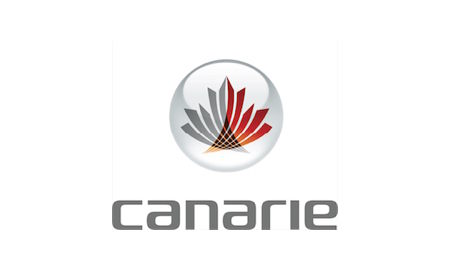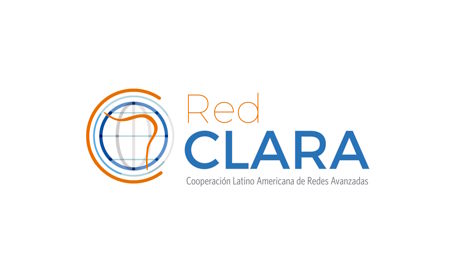PRESS RELEASE
Media Contact:
Heidi Morgan, Director
Center for Internet Augmented Research and Assessment (CIARA)
Florida International University
305-348-2006
heidi@fiu.edu
Miami, Florida, April 7, 2015 – Florida International University’s Center for Internet Augmented Research and Assessment (CIARA) is pleased to announce the five-year AmLight ExP (IRNC BACKBONE: Americas Lightpaths Express and Protect) NSF Award#ACI-1451018.
Scientific research and educational activities carried out between the U.S. and Latin American countries have been evolving, benefiting from the shared investments made by the U.S., Brazil and other countries in Latin America. Astronomy, High-Energy Physics, Comparative research in Biodiversity, Ecology and Genomics, Materials Science, Seismology, Future Internet Research, Ultra-High Definition (UHD) video and streaming research are some of the areas of collaborative science research activities, supported by research infrastructures and cyberinfrastructure distributed across the U.S. and Latin America, with diverse requirements for network services. “As data generated through scientific activities increases, so too does the demand for high-throughput production network services to transport data between the locations where they are collected or generated, and subsequently processed, analyzed and archived. These services must also support the advanced access and data mining uses of the scientific users distributed throughout the Western hemisphere and the world, together with the needs of the teachers and students using these datasets to open the minds of the next generations of researchers as well as citizen scientists,” said Dr. R. Chris Smith, Director and Head of Mission of AURA Observatory in Chile.
In response to the growing network requirements of these U.S.-Latin America collaborative science research activities, the Americas Lightpaths Express and Protect (AmLight ExP) project implements a hybrid network strategy that combines the use of optical spectrum (Express) and leased capacity (Protect), in order to build a reliable, leading-edge network infrastructure for research and education. Principal Investigator, Dr. Julio Ibarra, the Assistant Vice President for Technology Augmented Research at FIU said, “Researchers will be able to leverage the resources of AmLight ExP to foster network innovation and to address increasing network services requirements between the U.S. and the nations in South America.” Co-Principal Investigator Dr. Donald A. Cox, from Vanderbilt and Fisk Universities, said, “AmLight EXP is possible through the commitment to the sharing of resources and participation in the discourse and governance of the project by institutions representing the science and engineering research and education communities of interest for the Western Hemisphere”. The project partners include: Association for Universities for Research in Astronomy (AURA, USA), Cooperación Latino Americana de Redes Avanzadas (RedCLARA: Latin America), Internet2 (USA), Red Universitaria Nacional (REUNA:Chile), Research and Education Network at São Paulo, former ANSP Network (REDNESP: São Paulo, Brazil), Rede Nacional de Ensino e Pesquisa (RNP: Brazil), Canadian Advanced Research and Education Network (CANARIE, Canada), the Florida Lambda Rail (FLR, USA) and Florida International University (AtlanticWave and AMPATH, USA).
The total production bandwidth provided by AmLight ExP between the U.S. and South America will grow to more than 680G over the next five years. This will serve as a flexible inter-regional infrastructure, enabling communities of scientists to expand their research, education, and learning activities uniquely empowered through AmLight ExP’s access to unlit optical spectrum on submarine cables, and through employing dynamic circuits in a production environment.
A rational global research and education network can be achieved when people, technology and the operational processes evolve to perform effective and efficient provisioning of resources to support the global e-Science community. Through AmLight ExP spectrum is being set aside to operate as part of the emerging Global Research and Education Network (GREN), initially illuminated with a 100G lightpath between the Internet2 point-of-presences in Jacksonville, Florida, and the RedCLARA point-of–presence in São Paulo, Brazil.
AmLight ExP will serve to increase the rate of discovery in the U.S. and across the Western Hemisphere. Faster discovery means quicker focus on the greatest benefit for society. AmLight ExP will act as a catalyst for new communities of researchers and learners with a bridge linking Latin Americans, benefiting U.S Hispanic students, teachers and researchers. FIU is committed to serving the needs of graduate and undergraduate education through models that bring together students and the networking community with scientists from all domains.
About CIARA: Florida International University’s Center for Internet Augmented Research and Assessment (CIARA), in the Division of IT, has developed an international, high-performance research connection point in Miami, Florida, called AMPATH (AMericasPATH; www.ampath.net). AMPATH extends participation to underrepresented groups in Latin America and the Caribbean, in science and engineering research and education through the use of high-performance network connections. AMPATH is home to the Americas Lightpaths (AmLight) high-performance network links connecting Latin America to the U.S., funded by the National Science Foundation (NSF), award #ACI-0963053 and the Academic Network of São Paulo (award #2003/13708-0) (http://ciara.fiu.edu/).
About REDNESP (former ANSP): The Research and Education Network at São Paulo (REDNESP), former ANSP, provides connectivity to the top R&E institutions, facilities and researchers in the State of São Paulo, Brazil, including the University of São Paulo, the largest research university in South America. REDNESP directly connects to AmLight in Miami at 20G. REDNESP also provides connectivity to Kyatera, a 9-city dark-fiber-based optical network infrastructure linking 20 research institutions in the state and a number of special infrastructure projects like GridUNESP, one of the largest computational clusters in Latin America, supporting interdisciplinary grid-based science (www.rednesp.br).
About RNP: The Brazilian Education and Research Network (RNP), qualified as a Social Organization (OS) by the Brazilian government, is supervised by the Ministry of Science, Technology and Innovation (MCTI), and is maintained through the inter-ministerial RNP program, which also includes the Ministries of Education (MEC), Health (MS) and Culture (MinC). The first Internet provider in Brazil with national coverage, RNP operates a high-performance nationwide network, with points of presence in all 26 states and the national capital, providing service to over 1200 distinct locations. RNP’s more than four million users are making use of an advanced network infrastructure for communication, computation and experimentation, which contributes to the integration of the national systems of Science, Technology and Innovation, of Higher Education, of Health and of Culture (www.rnp.br/en).
About AURA: The Association of Universities for Research in Astronomy (AURA) is a consortium of 40 US institutions and 4 international affiliates that operates world-class astronomical observatories. AURA’s role is to establish, nurture, and promote public observatories and facilities that advance innovative astronomical research. In addition, AURA is deeply committed to public and educational outreach, and to diversity throughout the astronomical and scientific workforce. AURA carries out its role through its astronomical facilities (www.aura-astronomy.org).
About CLARA: CLARA, the Latin American Cooperation of Advanced Networks (Cooperación Latino Americana de Redes Avanzadas), is a non-profit organization whose members are the NRENs of Latin America, and which is in charge of the management, development and operation of RedCLARA as well as the coordination of Latin America’s research networking activities. RedCLARA directly connects to AmLight links in São Paulo, Santiago, Miami and Tijuana. Latin American NRENs connected to redCLARA: Argentina (Innova-Red), Brazil (RNP) ,Chile (REUNA), Colombia (RENATA), Costa Rica (RedCONARE), Ecuador (CEDIA), El Salvador (RAICES), Guatemala (RAGIE), México (CUDI), Panamá (RedCYT), Perú (RAAP), Uruguay (RAU) and Venezuela (REACCIUN) (www.redclara.net).
About Internet2: Internet2, U.S. national backbone network, peers with Latin American R&E networks over AtlanticWave and PacificWave, from multiple peering points. Internet2 comprises 252 U.S. universities, 82 leading corporations, 68 affiliate members, including government agencies, 41 regional and state education networks, and more than 65 national research and education networking partners representing over 100 countries (www.internet2.edu).
About REUNA (Chile): Red Universitaria Nacional, REUNA, provides a leading digital platform that articulates, connects, and fosters collaboration between those entities that based in Chile belong to the fields of science, education, and the Chilean local culture, connecting them to the rest of the world throughout innovating services. With over 20 years’ experience and currently made up of 31 institutions, REUNA’s digital platform covers 13 regions between the northern city of Arica and the southern city of Osorno (www.reuna.cl/en/).
About CANARIE (Canada): Canarie, Canada’s NREN, interconnects with U.S. R&E networks at PacificWave (Seattle), StarLight (Chicago), MANLAN (New York), and peers with Latin American NRENs over AtlanticWave and PacificWave. One million researchers, scientists and students at nearly 2,000 Canadian institutions, including universities, colleges, research institutes, hospitals, and government laboratories have access to the CANARIE Network (www.canarie.ca).
About Florida LambdaRail: FLR is the regional optical network of Florida, formed as a consortium of the Florida’s research universities, to support their research and education mission (www.flrnet.org).
Download pdf version here.
|




